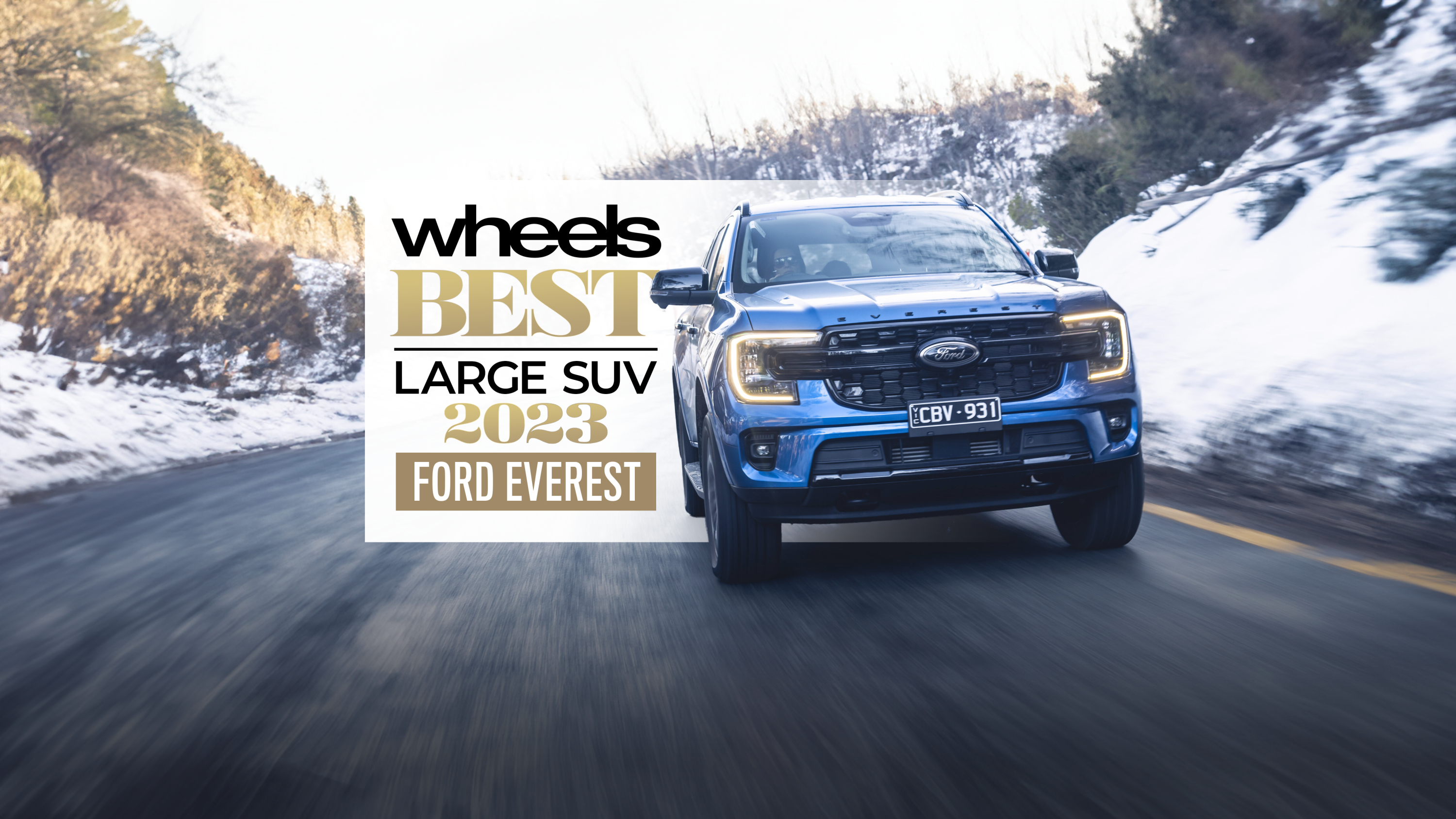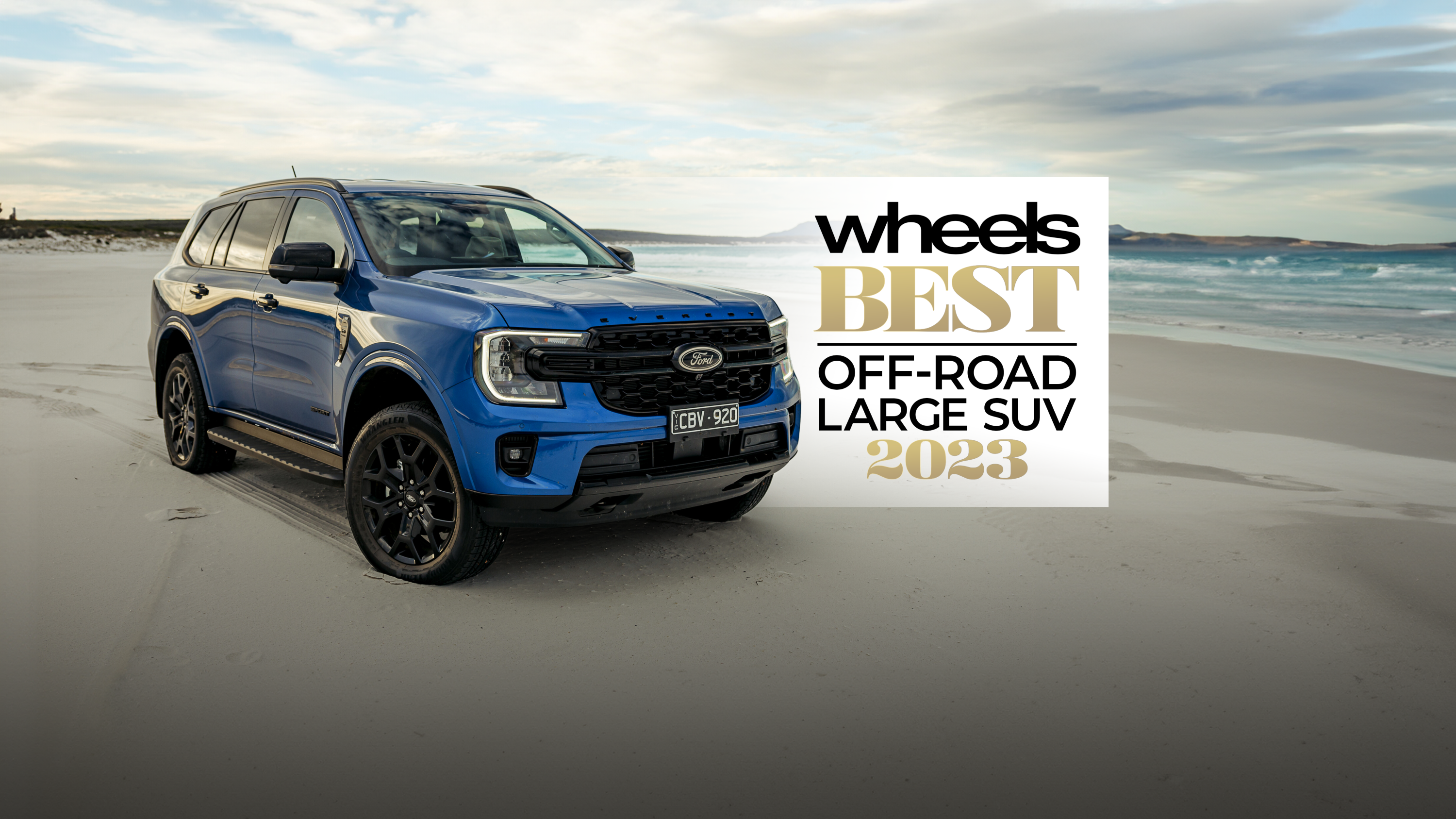
One of the particular cruelties of getting older is the sudden ability to identify youthfulness in other people.
It doesn’t creep up on you, this special power; it appears suddenly, like an extra toilet stop in the night or a pair of white New Balance trainers, and its arrival can deliver quite a shock. One day you’re blissfully young and unaware; the next you need a lie down as you find yourself marvelling at a younger person’s bright eyes, dewy skin and seemingly endless supply of energy.
I know all this because it’s how I look at my daughter, from the couch as she demands that I keep playing, and it’s exactly how our group of assembled SUVs must be feeling as they watch the 2024 Honda CR-V roll into our designated meeting place.
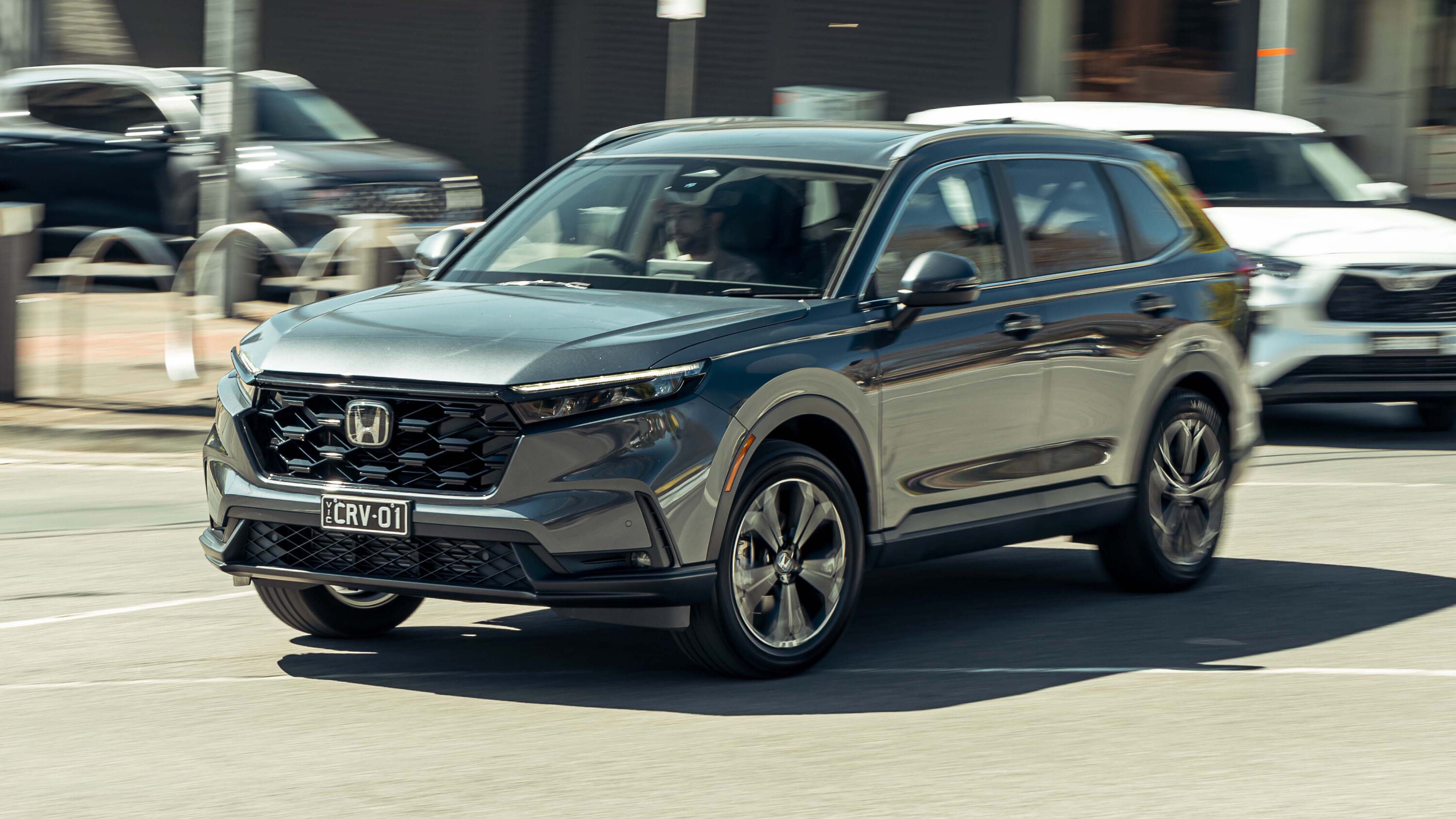
Now in its fifth-generation, the 2024 Honda CR-V is box fresh and doesn’t only roll on a new platform but boasts a roomier – and more premium-feeling – cabin after a growth spurt that pushes it out of medium-SUV territory and into the mix with large SUVs (if on the shorter side). It looks sharper than ever, too.
The CR-V has long been a conservatively handsome thing (the boxy original was particularly great to our eyes) but there’s something especially pleasing about this new model’s crisp shoulder line, long bonnet and swept-back windscreen. Fresh, resolved and contemporary? That’s the new CR-V. In saying that, the high spec of our test car certainly helps…
While the CR-V is now more expensive than ever (prices have crept north by as much as $8600 in some variants), it still stacks up remarkably well against its large SUV competitors for value.
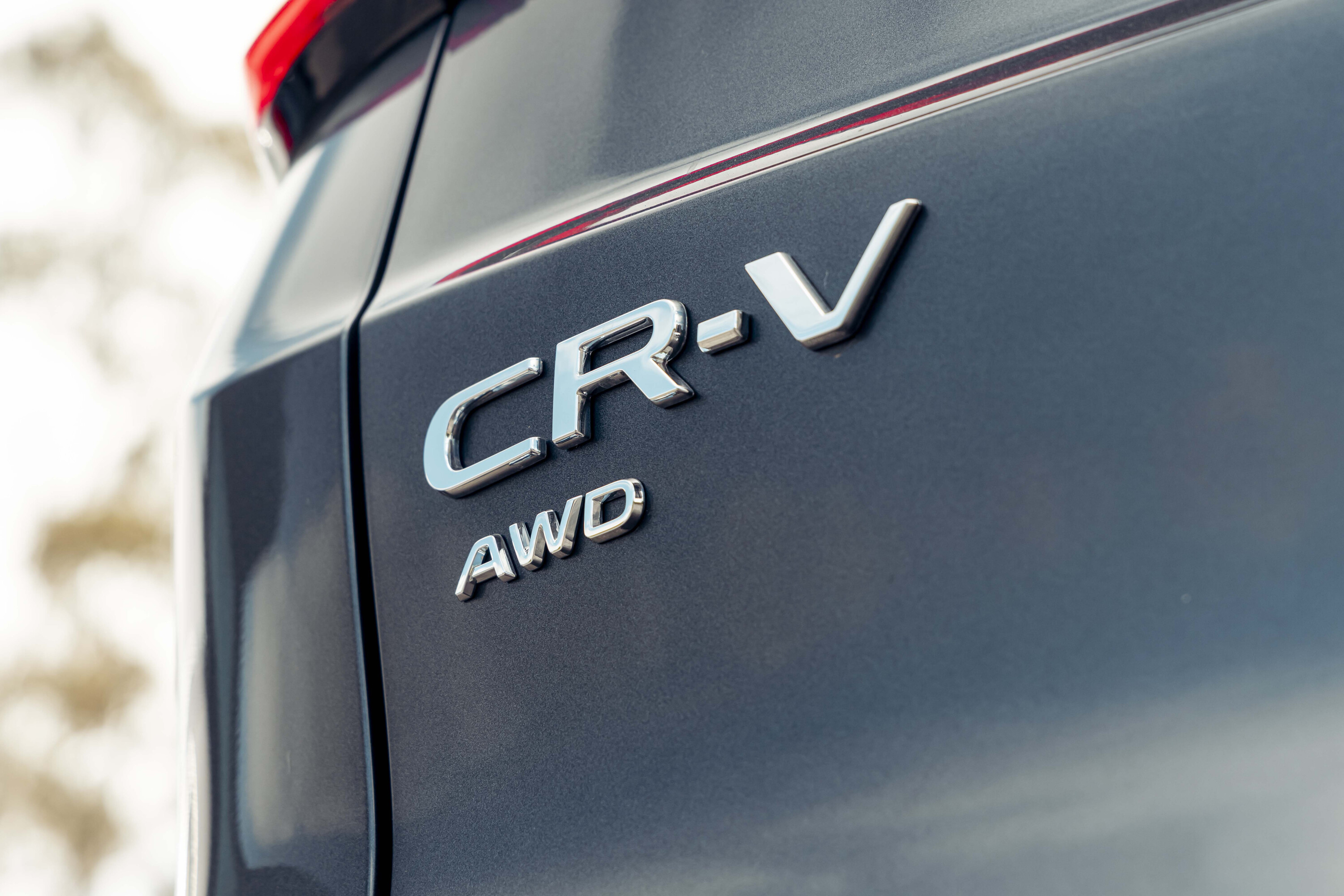
As such, we were able to select a top-spec VTi LX AWD variant for this sub-$60K test, meaning it rolls on large 19-inch alloys and benefits from matte black exterior detailing.
Our other contenders, meanwhile, could only offer humbler trim levels to squeak under the $60K marker and next to the Honda, you can almost feel them wince as they glance down at their ageing sheetmetal, smaller alloys and dated cabins.
The oldest of our quartet, and therefore the most likely to be self conscious, is the Hyundai Santa Fe. Assembled here in second-from-bottom Active guise which carries a drive-away price of $58,710, this fourth-generation Santa Fe was first revealed back in 2012 – though it remains longer than the new CR-V.
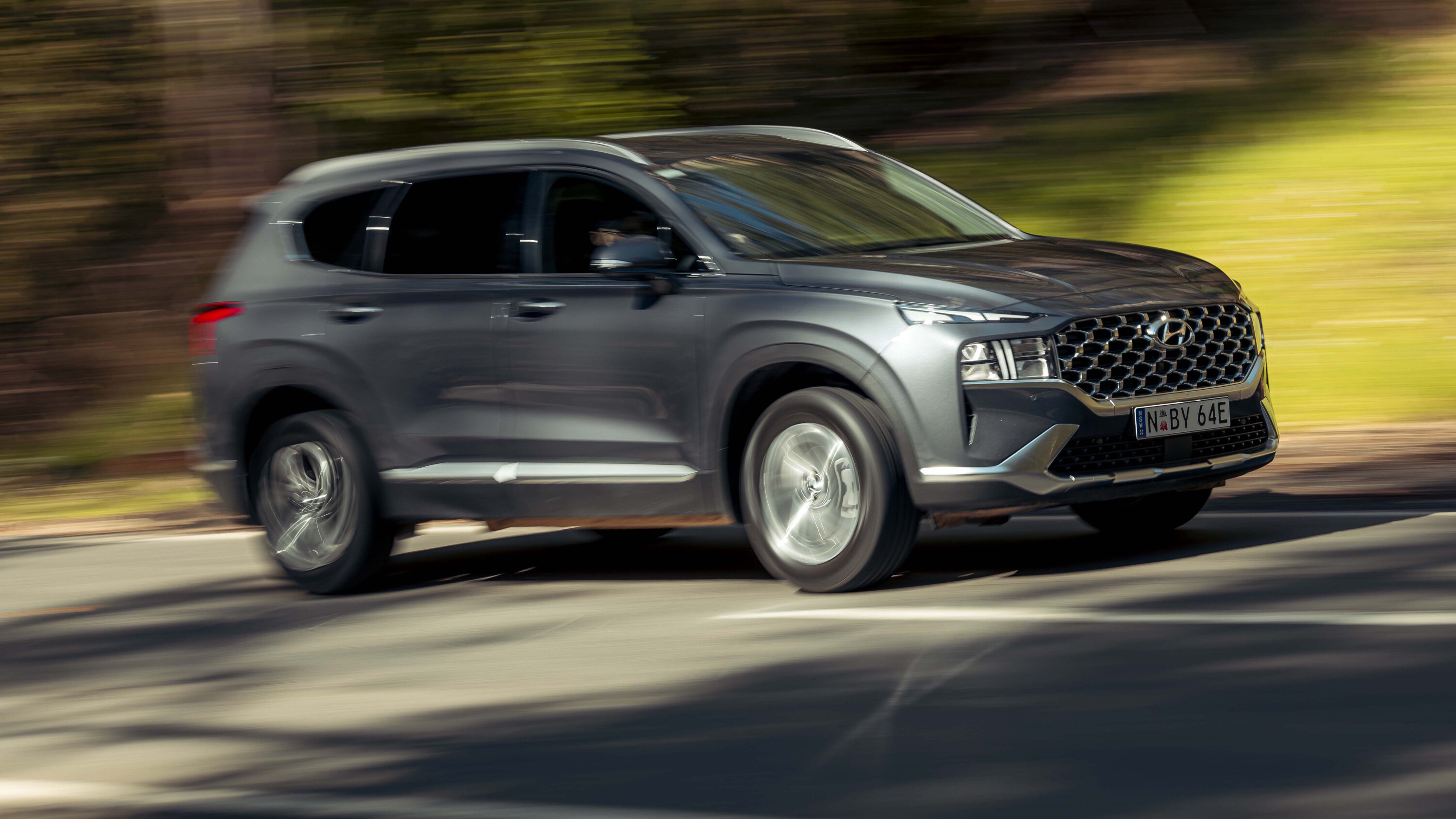
Hyundai’s gutsy 2.2-litre oiler, which makes 148kW/440Nm, is lurking under the bonnet
An all-new generation Santa Fe, which is bigger, boxier and looks radically more futuristic, has already been revealed and will arrive before the end of 2024. But that doesn’t mean you should discount the current Santa Fe from this battle of sub-$60K family SUVs…
Despite its age, we’ve long praised the Santa Fe’s impressive cabin space, roomy third row and tidy handling. Plus, our tester has a key point of difference to the other contenders: it’s a turbo diesel.
Hyundai’s gutsy 2.2-litre oiler, which makes 148kW/440Nm, is lurking under the bonnet, so if effortless propulsion and lower fuel bills are your priorities, the Santa Fe could cause an upset.
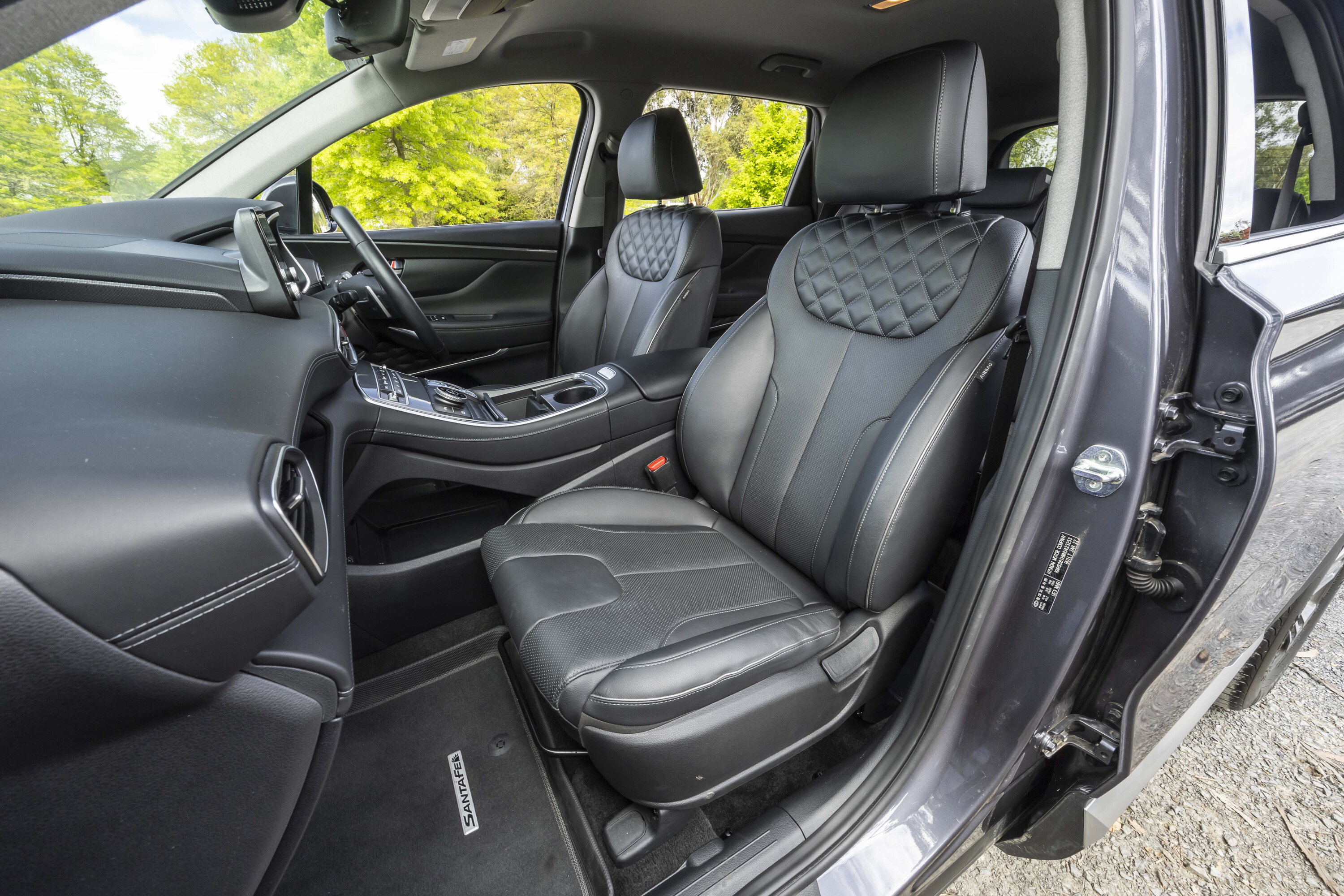
An all-new Skoda Kodiaq is due here in late 2024, though the current model is ageing gracefully.
In fact, even next to the fresh-faced Honda, the Skoda’s exterior still looks spry and timeless – like George Clooney at a movie premiere – and you’d never guess our test car is actually the base model.
At $56,490 driveway, our particular Kodiaq is the entry-level Style, yet it’s remarkably well equipped, with its long list of standard features including 19-inch alloys, LED day-time running lights and an electric tailgate – the latter deserving a mention because it’s missing from both the Hyundai and Toyota. No electric tailgate when you’re paying circa-$60K? Grim.
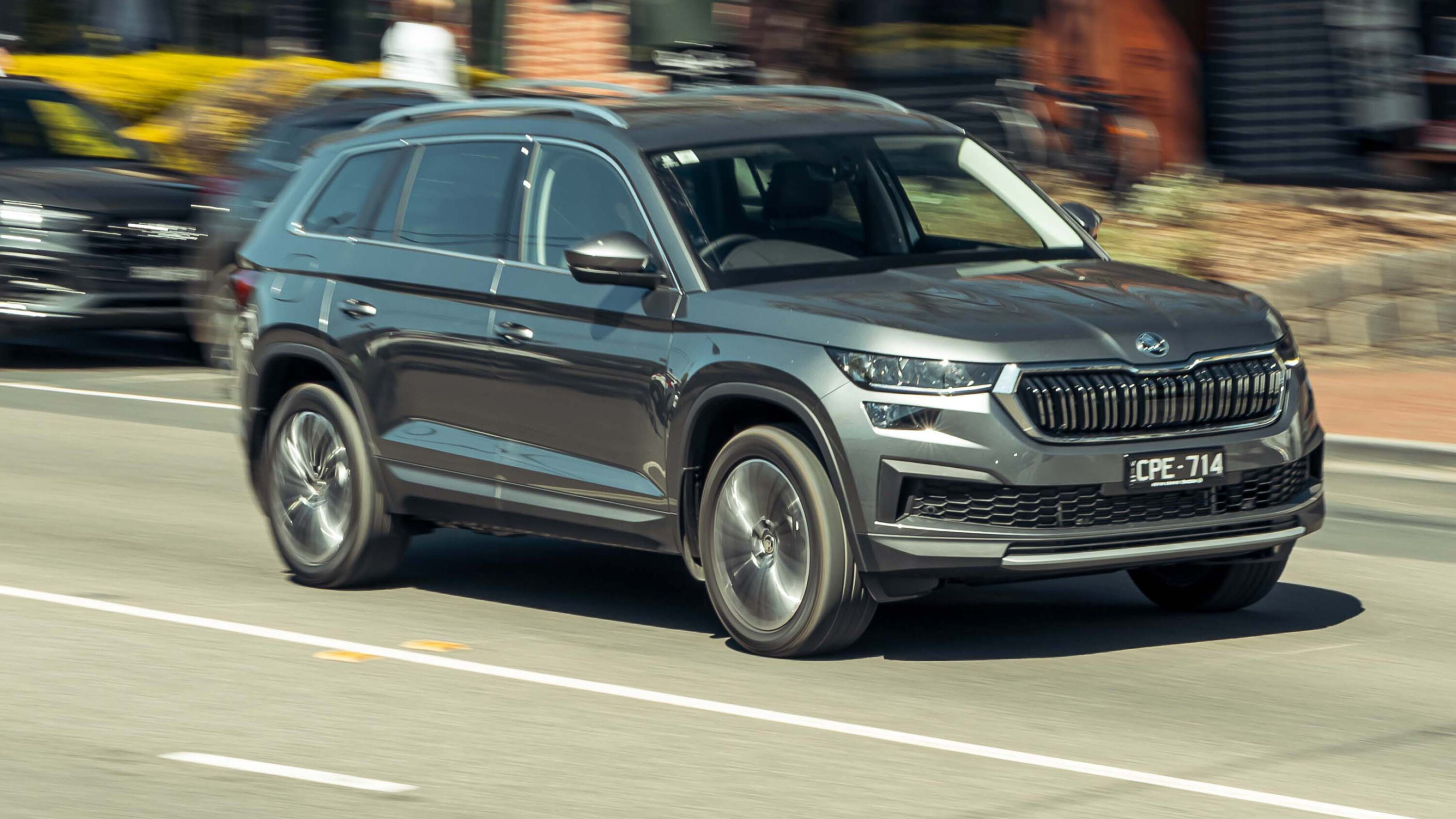
Further bolstering the Kodiaq’s stock is a recent MY24 update that saw the return of some equipment previously unavailable due to the semiconductor shortage, including: rear-cross traffic alert, blind-spot monitoring, auto-dimming exterior mirrors and power child locks.
Throw in clever packaging that squeezes in a third row of seats into a body that’s fractionally shorter than the CR-V, VW’s well regarded 2.0-litre EA888 engine, plus Skoda’s host of ‘simply clever’ touches, and it’s clear the Kodiaq still has plenty of appeal, despite its imminent replacement.
The closest match for the Honda, at least when it comes to age, is the Toyota Kluger. First introduced in 2021, the second-gen Kluger is bigger than the original, can be had with petrol or hybrid power and, thanks to its fresh TNGA-K underpinnings, is surprisingly youthful. Not that you’d know that by looking at it, though…
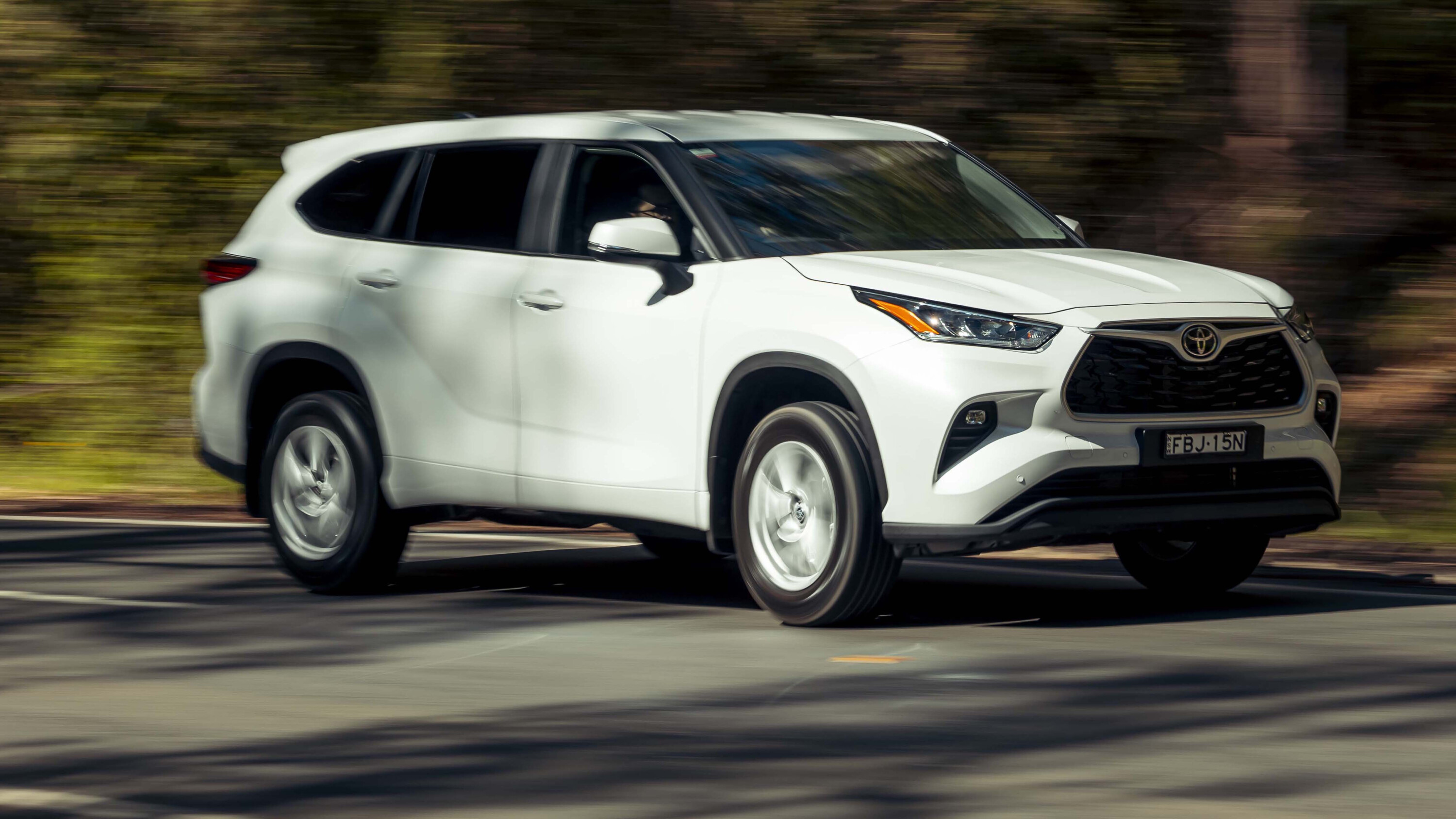
Our Kluger is the entry-level GX front-wheel drive and its white paint, drab cloth seats and small-looking alloys seem to scream “Hire car spec!”.
At $56,525 drive-away, the Kluger is the cheapest car in this test and it feels it, especially inside, where you’ll encounter uninspiring grey upholstery, a small centre touchscreen and manual-adjust seats.
But while its cabin might lack for premium touches, the Kluger certainly isn’t lacking in the power department. Under the bonnet is a 2.4-litre turbo petrol that produces a meaty 198kW/420Nm and sends its grunt solely to the front axle. That doesn’t only make it the most powerful in this test but also the only front-driver. An inspired combo? Or a thirsty, torque-steering mess on a damp road? It could go either way…

One thing that’s not up for debate is how convincing the Honda feels inside. Slip into the driver’s seat and you’re greeted by a cabin that feels modern, minimal, and spacious.
The basic design mirrors that of the Honda Civic, right down to the open-mesh inserts and the joystick-like stalks for the air vents, and it’s a triumph of pleasing aesthetics and sound ergonomics.
Admittedly the centre screen does look a touch small, even though it’s 9.0 inches, and Android users have to use a cord to access Android Auto (CarPlay is wireless), but it’s difficult to fault the new CR-V’s cabin for seat comfort, passenger space, storage or user friendliness.
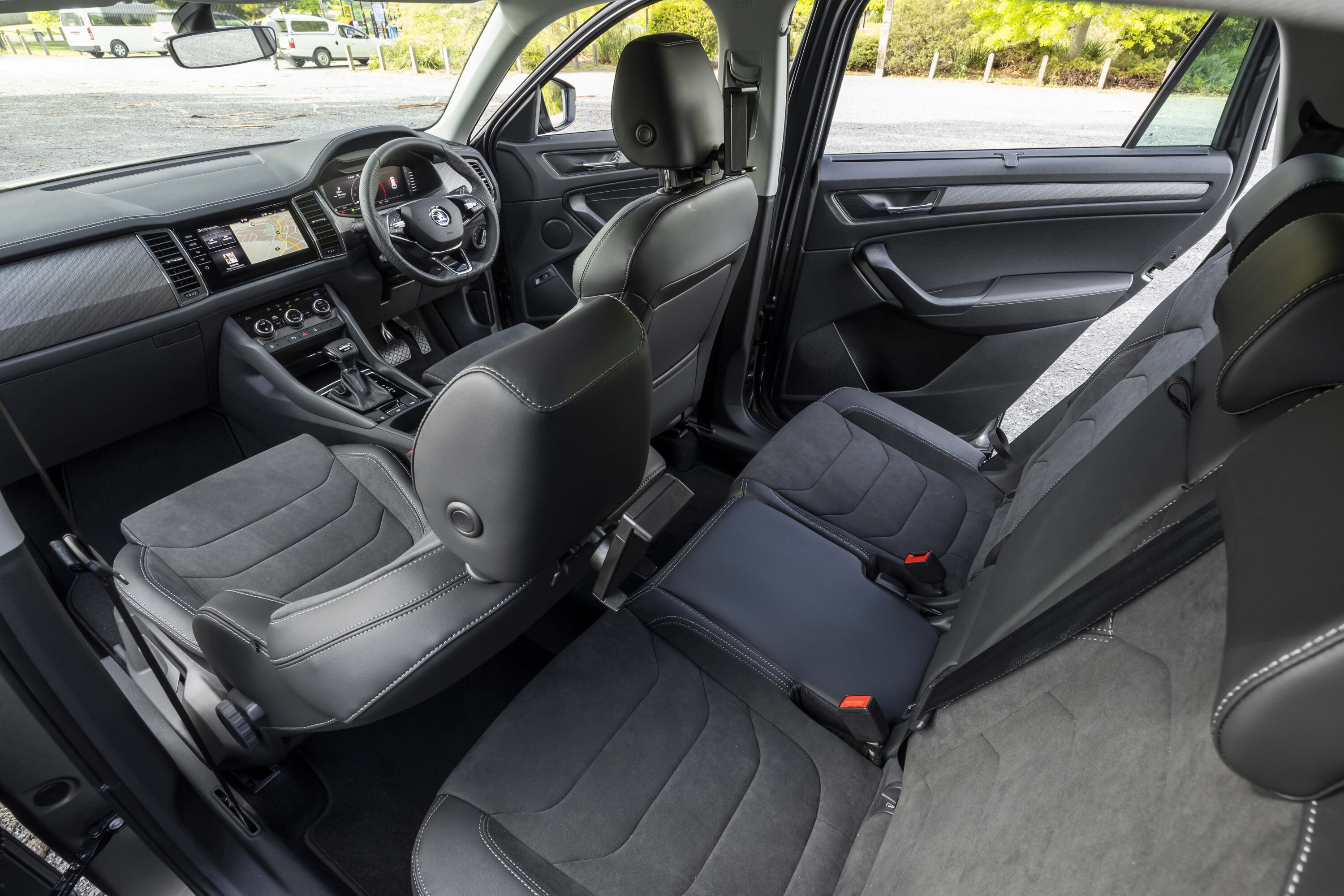
And because we’re testing the top-spec VTi LX, it’s absolutely bursting with standard equipment.
You get electric front seats, a large 10.2-inch digital driver display, wireless phone charging and twin USB ports (one Type-A, one Type-C), a leather steering wheel and a 12-speaker Bose sound system. Our CR-V is also the only contender with a panoramic sunroof.
Honda’s full suite of active safety systems is also present and includes: lane departure warning, lane-keep assist, adaptive cruise control, traffic sign recognition, blind-spot detection and rear-cross traffic alert.
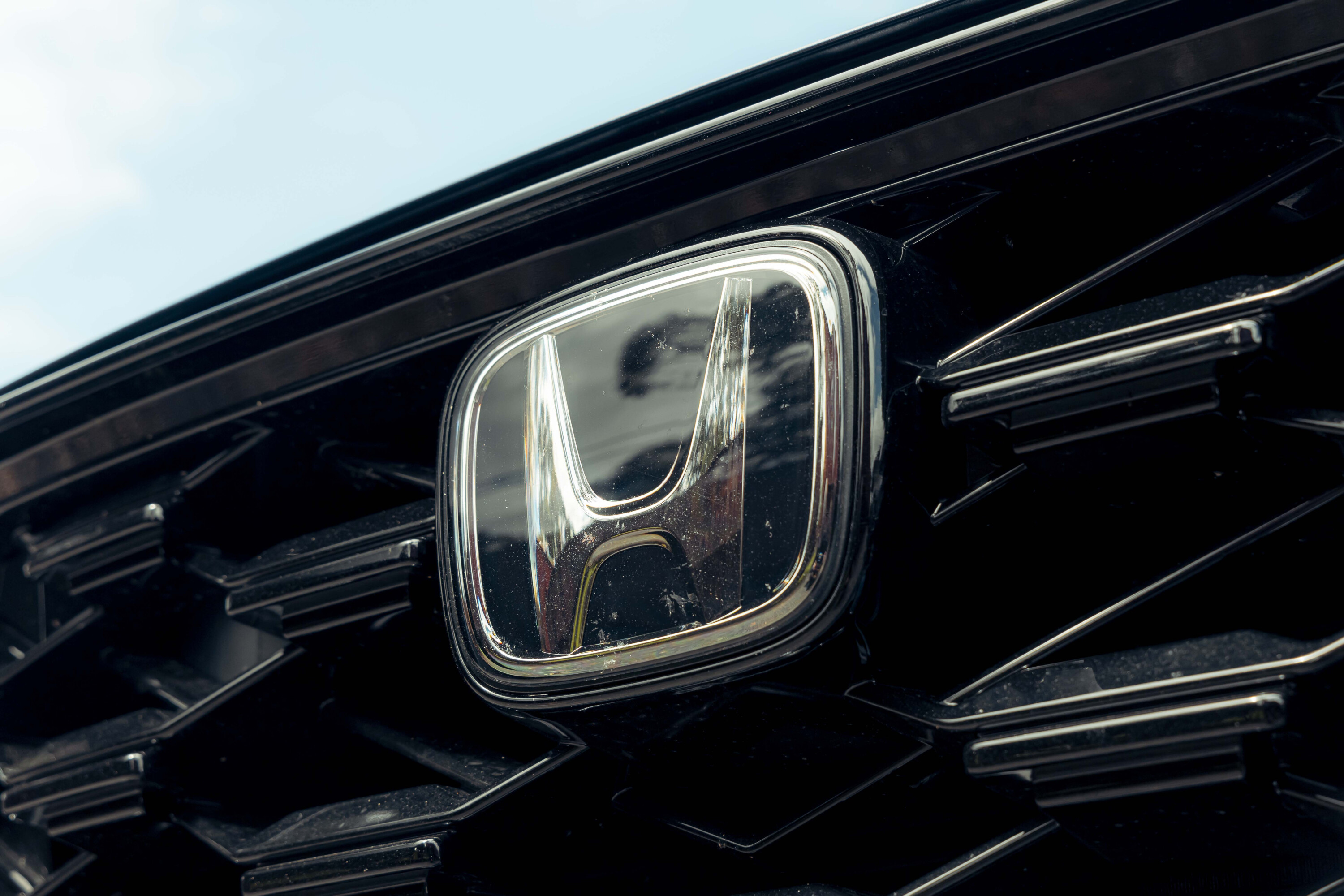
Perhaps the only thing missing is a child seat top-tether mount in the middle of the second row, which is a bummer.
And, crucially for some buyers, the VTi LX lacks a third row like its rivals here. That’s fixed by dropping into the model down, the $53K VTi L7, though this sacrifices all-wheel drive (for front drive) and some nice features (such as Bose audio and larger driver display).
The LX’s second row is surprisingly roomy, with a high-set cushion, excellent outward visibility, dedicated air vents and two more USB-C outlets. The only downers are a slight lack of headroom (blame the sunroof and high cushion) and the fact our five-seat CR-V doesn’t have a sliding second row.
The Honda’s 589L boot is impressively large and it features the lowest and flattest loading lip of our bunch. Boot space increases to 1671L when you lower the 60:40 rear seat and under the boot floor there’s a full-size spare, which is common in all our contenders bar the Skoda, which has a space-saver spare.
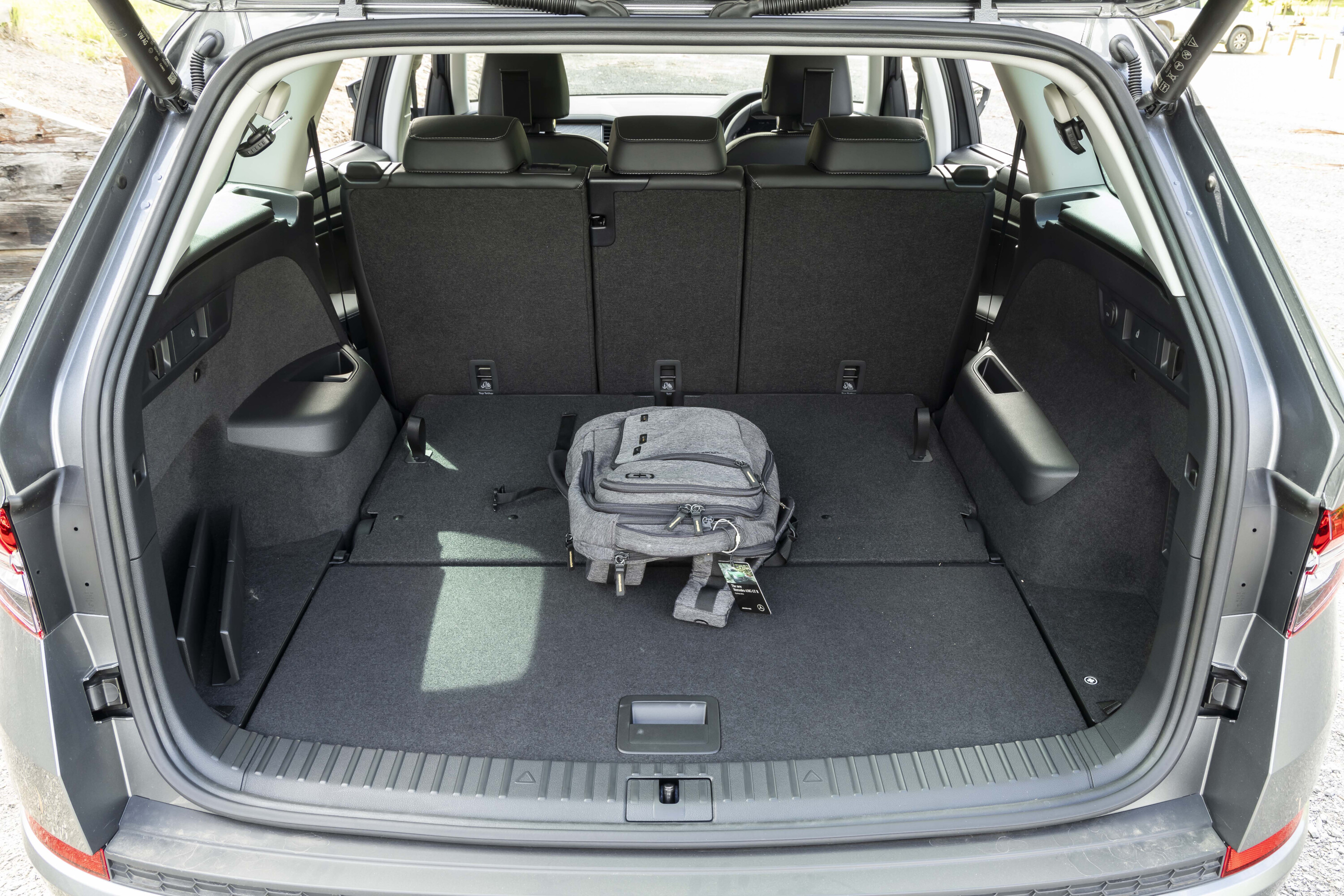
Another minor mark against the Honda? There’s nowhere to store the parcel blind when its not in use. And there’s no anchor point for the jack, either, which has been wedged unceremoniously on top of the spare tyre.
You won’t encounter such carelessness in the Kodiaq – it’s bristling with thoughtful touches. The 765L boot isn’t only large and deep (its loading lip is higher and narrower than the Honda, however) but it includes lidded storage cubbies on either side, an ingenious solution for storing the cargo blind, levers to electrically drop the back seats and velcro dividers that stick to the boot floor.
The middle row also folds completely flat and there’s a huge, reversible mat that extends all the way from the boot lip to just behind front seats.
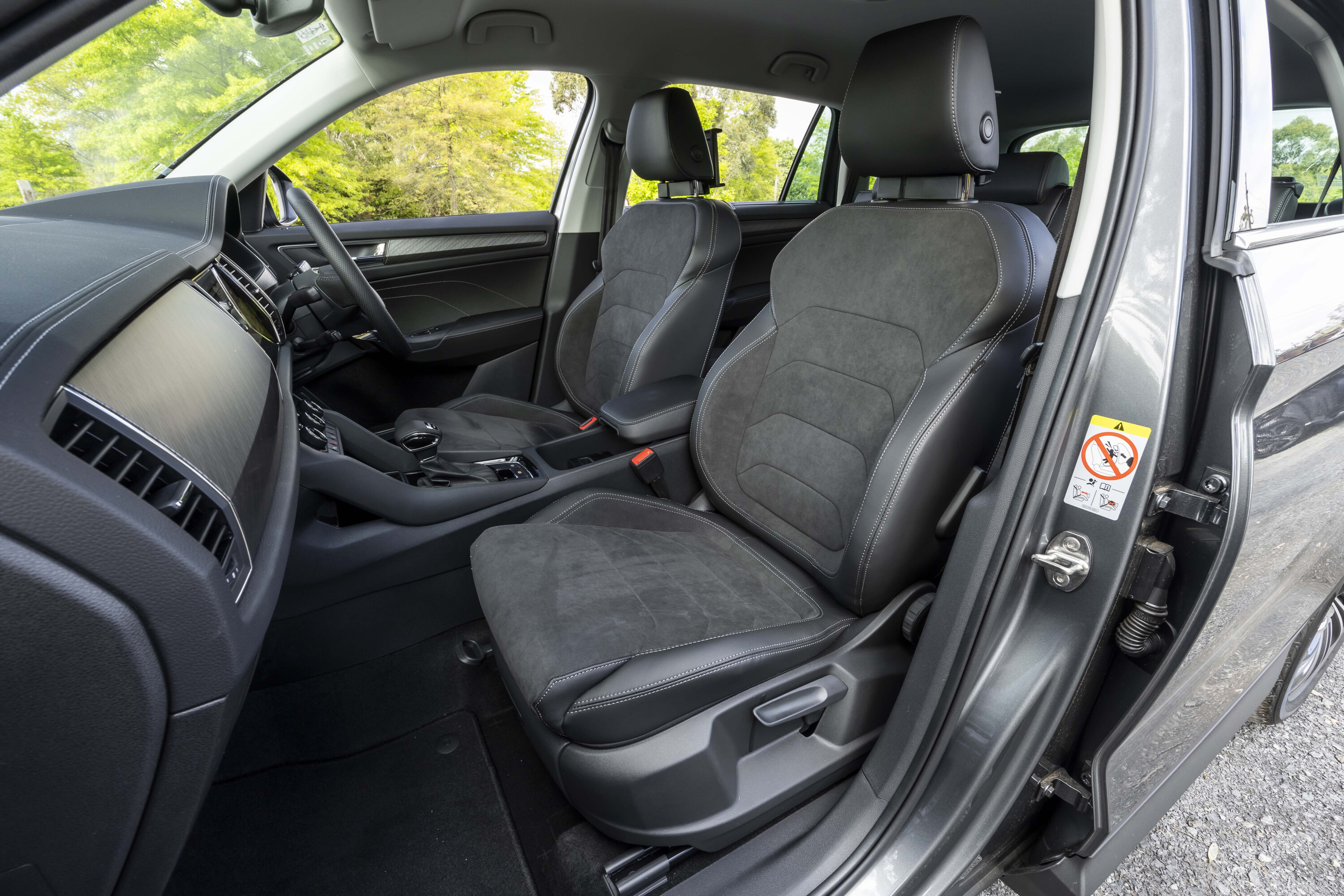
And you also score a third row of seats, of course, which fold flat into the boot floor.
The third row itself isn’t super roomy – the Kodiaq is more of a 5+2 than a genuine seven seater – but headroom is okay for adults and you score extra cupholders and storage cubbies.
The rest of the cabin is equally impressive. The Style scores manually adjustable front seats but they’re terrifically comfortable and wrapped in expensive-feeling suede. The front passenger seat is also the only member of this group to offer height adjustment.
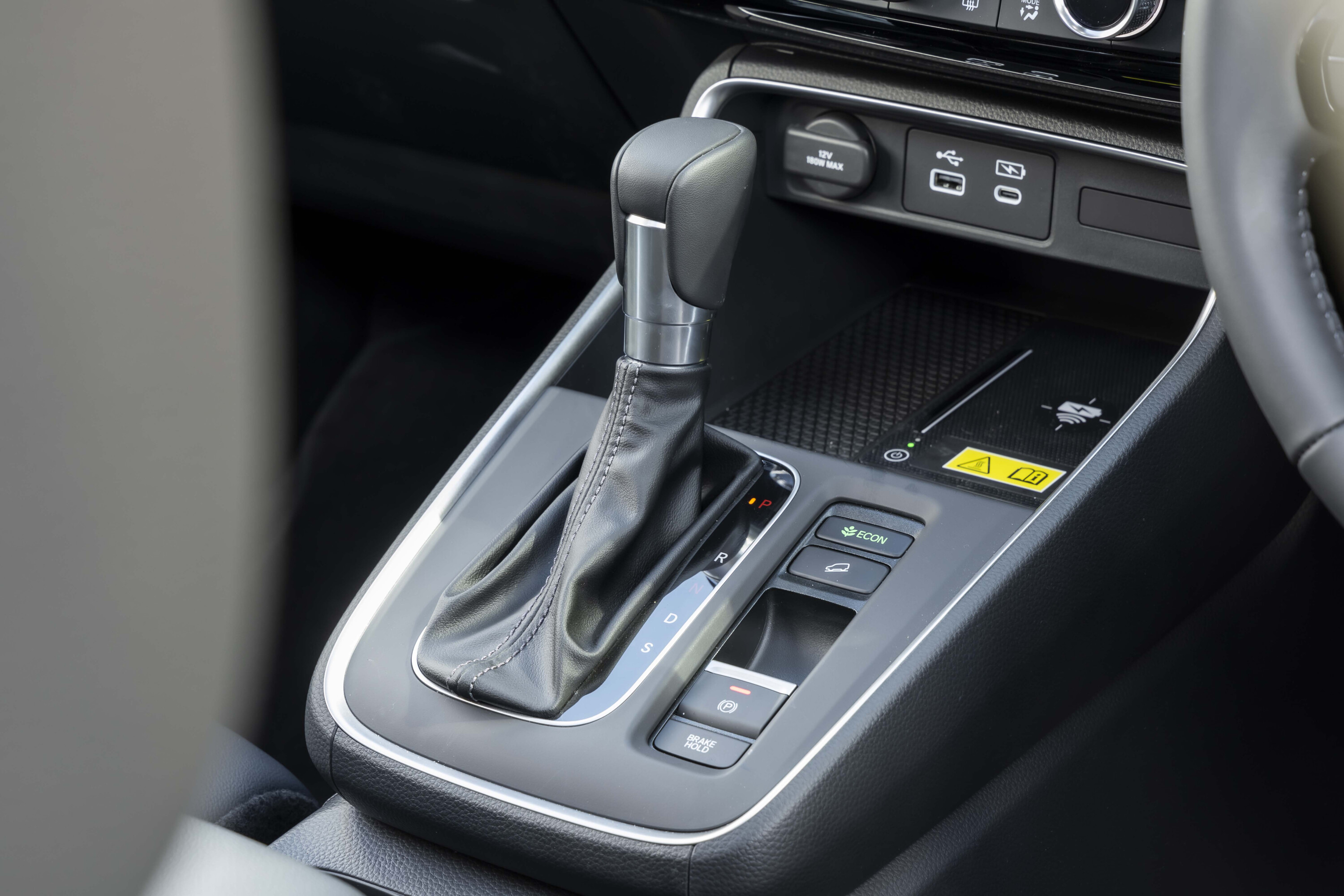
The middle row, which is on rails, is equally comfortable and thoughtfully executed
There’s no faulting the cabin’s ergonomic or usefulness, either. There are two gloveboxes, the flocked door pockets are generous, connectivity is sorted via wireless Apply CarPlay, twin USB-C ports and a wireless phone charger, and the centre touchscreen strikes a welcome balance between swiping and physical buttons.
The middle row, which is on rails, is equally comfortable and thoughtfully executed thanks to one-touch access to the third row, ample space for adults, standard window blinds (in a base model!) and tablet holders. There are no extra USB ports, however, which betrays the Kodiaq’s age a little.
If it’s space you’re chasing, though, it’s hard to look past the Kluger. At 4966mm long, 1930mm wide and 1755mm tall, the Toyota is easily the biggest SUV here – it’s so big it feels like you could crack it in half and swallow up the others like a Babushka doll – and it delivers the roomiest second and third rows on test.

Like the Kodiaq, the Kluger’s second row slides, and there’s a good amount of knee- and headroom for adults, as well as excellent outward vision.
Equipment levels are also impressive for a base model and include roof mounted air vents, dedicated temp and fan-speed controls, twin USB-C outlets, and a relatively flat floor which liberates foot space for middle seat passengers.
The middle seat itself is also deep and softly cushioned, with twin Isofix mounting points and top-tether hooks behind all three seats (unlike the Honda).
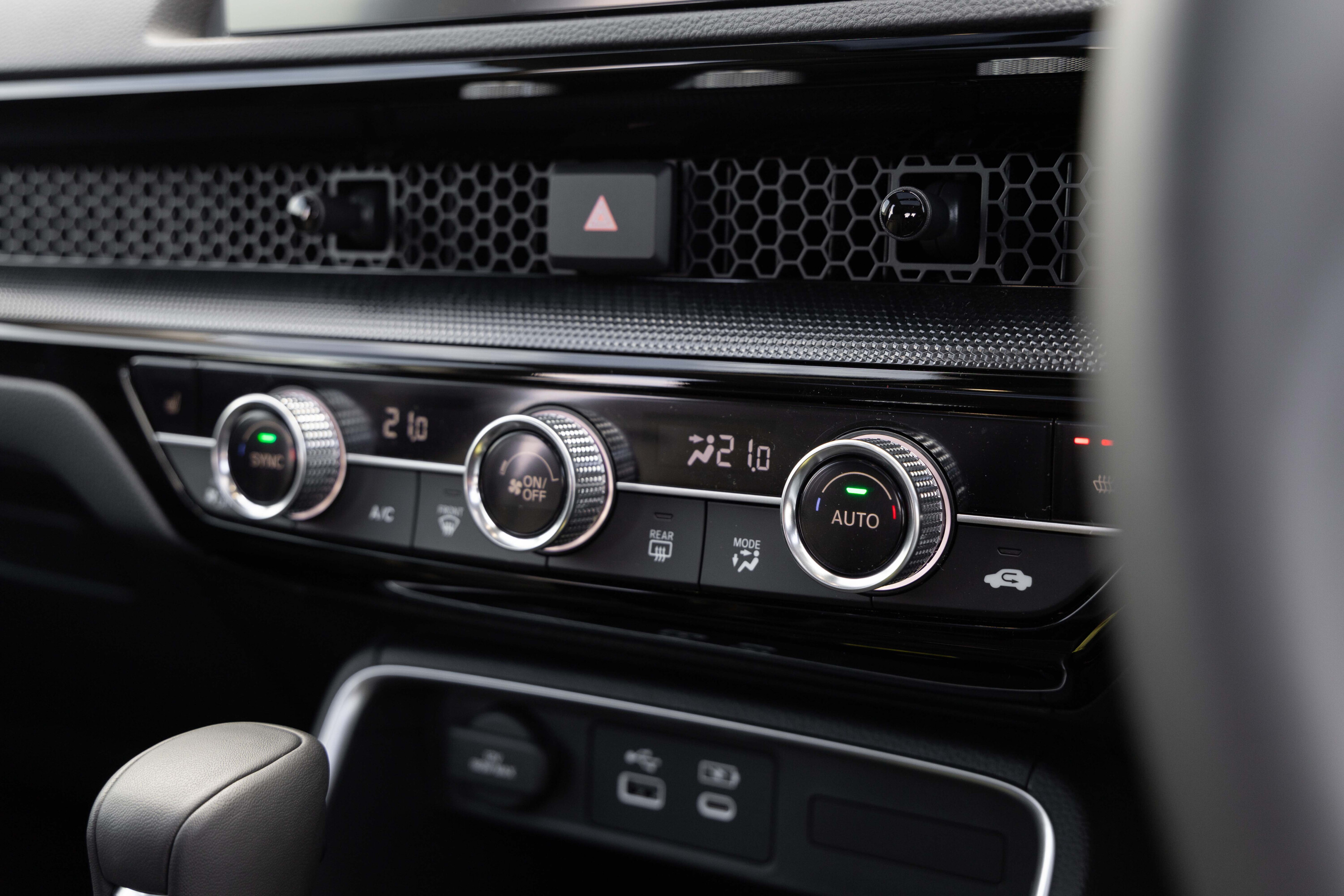
Access to the third row is easy thanks to a wide opening and once you’re in, you’ll discover enough room for adults to travel in relative comfort. The third-row backrest also reclines but there aren’t any top-tether points back there, so you can’t fit child seats in the third row, which is disappointing.
It’s up front where the cabin of our particular Kluger feels weakest. While the seats are softly cushioned and there’s an impressive amount of interior storage, the Kluger’s dash design feels heavy handed next to the clean and minimal interiors in the Honda and Skoda.
The 8.0-inch centre touchscreen is also small by 2023 standards, and the less said about Toyota’s clumsy infotainment software the better. At least CarPlay is wireless and there are loads of USB outlets, though, again, you’ll need a cord for Android Auto.
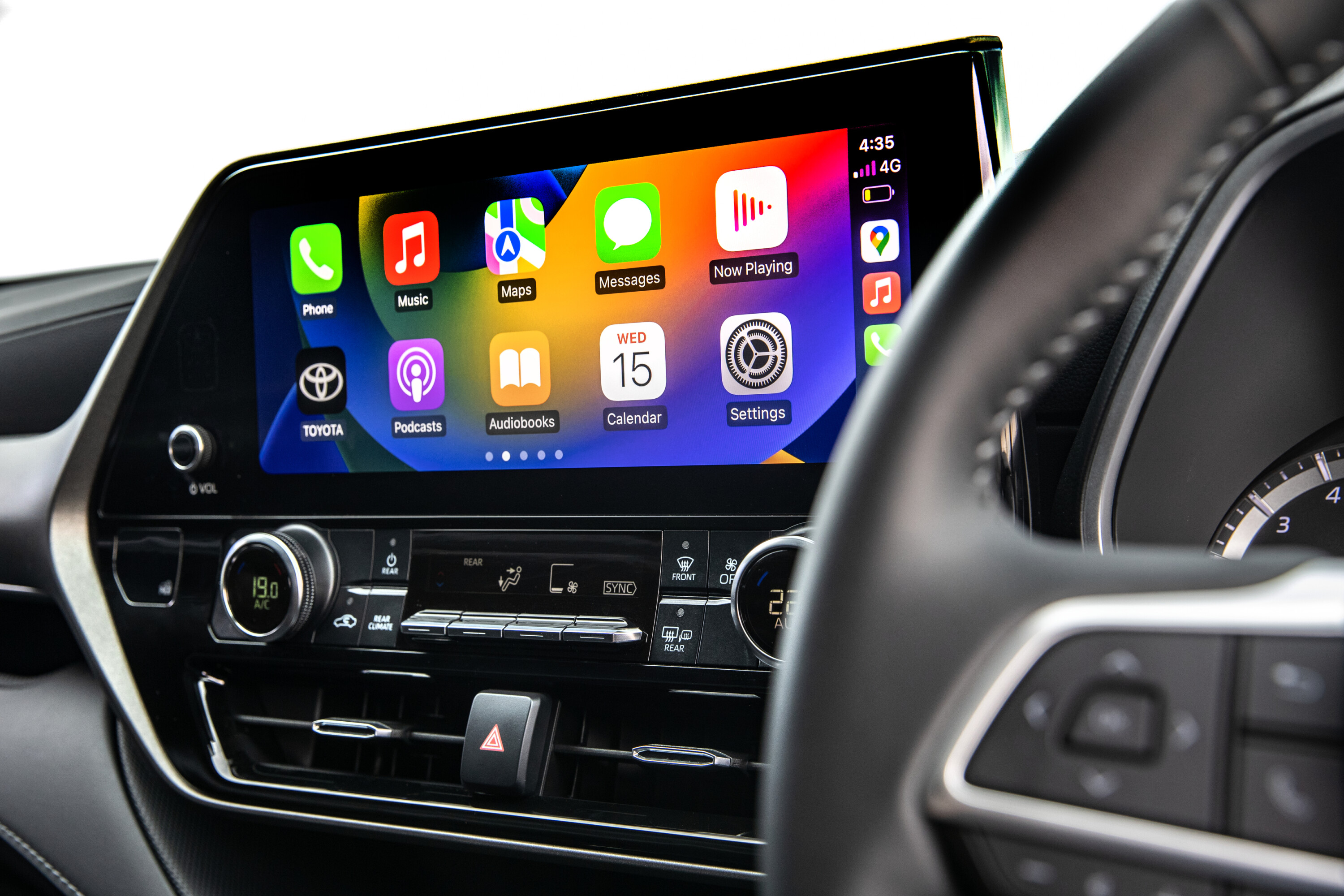
So while it might be big, comfy and functional, the Kluger’s cabin feels off the pace for tech and premium touches in this company.
You can level the same criticism at the Sante Fe. As the oldest member of this group, the Hyundai’s cabin betrays its age with a button-heavy design, analogue dials, and a high centre console that delivers a hemmed in feeling. There’s also only a single USB-A port for front passengers, although you do score a wireless charging pad and Apple CarPlay and Android Auto.
There’s also plenty of core goodness to enjoy. Storage is impressive, thanks to an extra cubby beneath the floating centre console, and because the Santa Fe is the second largest of this group, there’s plenty of cabin space to exploit.
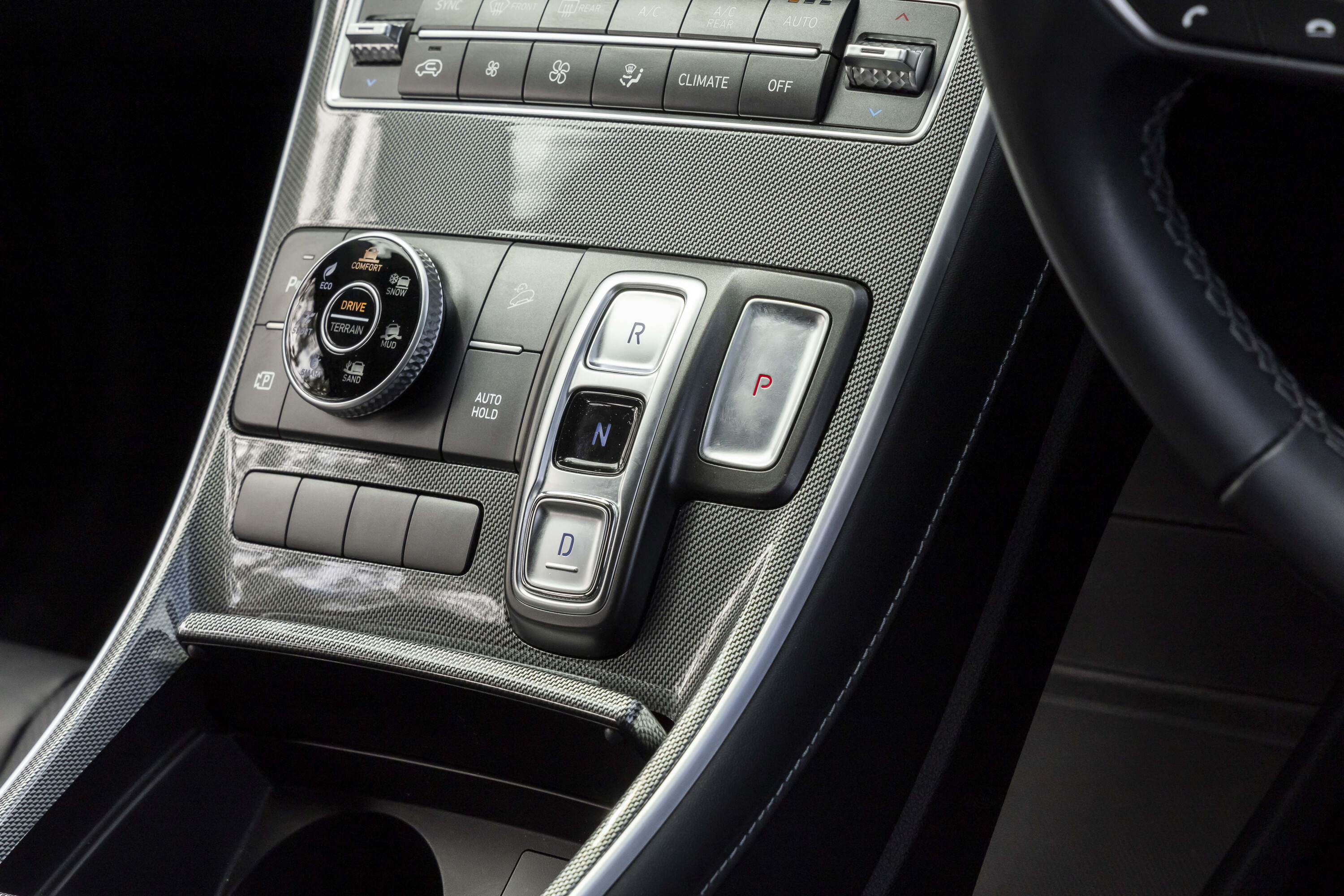
Grown ups can also occupy the third row, which is spacious enough to make the Santa Fe a genuine seven-seater, though it’s still not as commodious as the Kluger.
So it’s the Honda and Kodiaq that have their noses in front for value, cabin presentation and equipment, but what about driving dynamics? First up: the Honda. We have arguably the most driver-focused CR-V on this test – the 1.5-litre turbo AWD – and initial impressions are exceedingly positive.
The steering is accurate and naturally weighted, body roll is nicely contained, and the ride on passive suspension strikes an almost ideal balance between comfort and control.
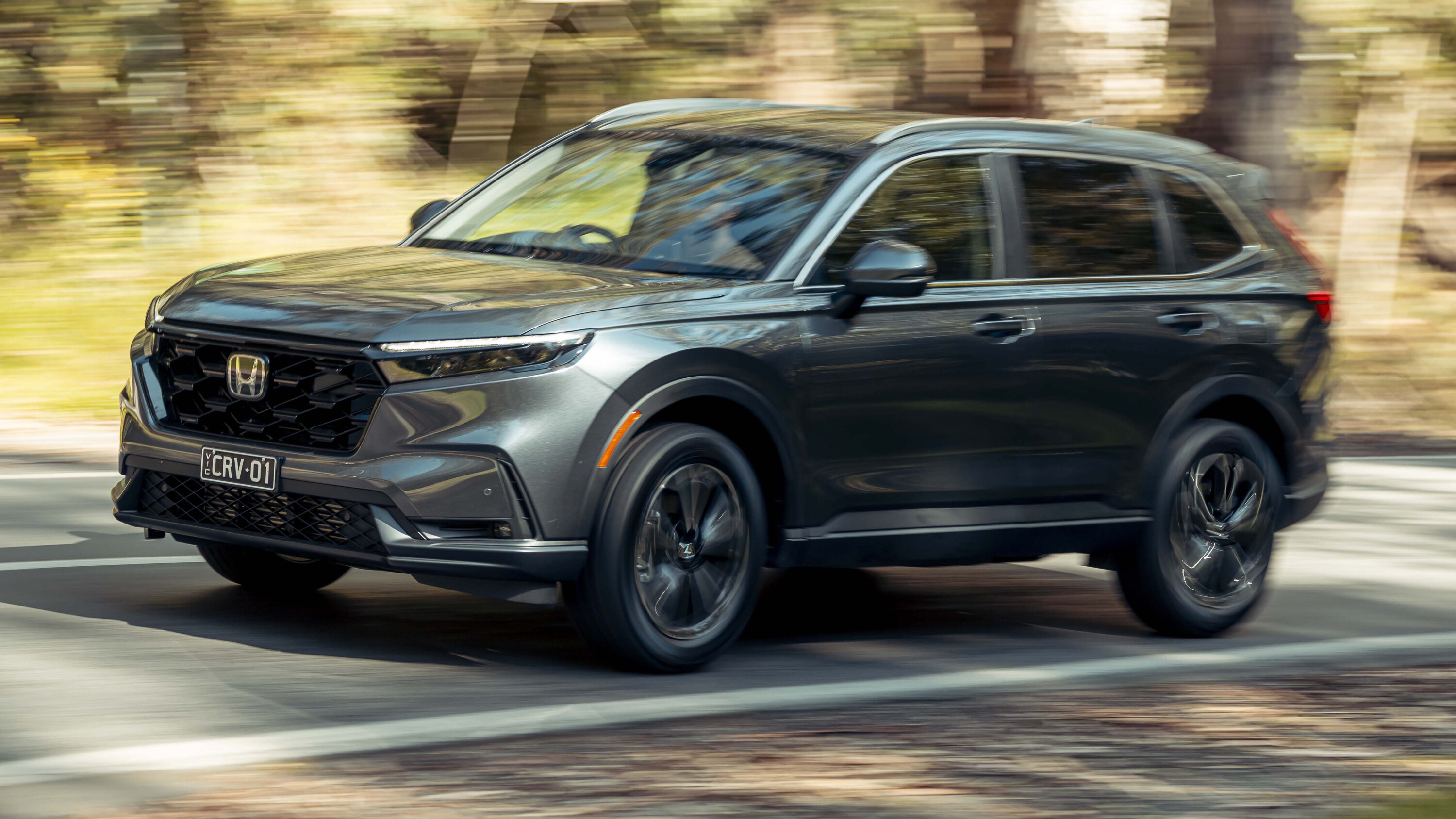
The damping is especially good, somehow filtering out all the niggly, low-amplitude bumps that plague Aussie back roads while also being assertive enough to immediately arrest reactions to bigger bumps.
In fact, on a twisty section of road, this new CR-V verges on unflappable. There’s loads of traction, grip is plentiful and the steering (2.4 turn lock-to-lock) is quick witted and accurate. It’s actually… fun. And far more engaging that a family SUV needs to be. We like that.
The engine is less of a slam dunk. Honda has paired the 1.5-litre turbo unit with a CVT and for the most part it works well. It’s quiet around town and the CVT does a decent job of impersonating a conventional torque converter auto.
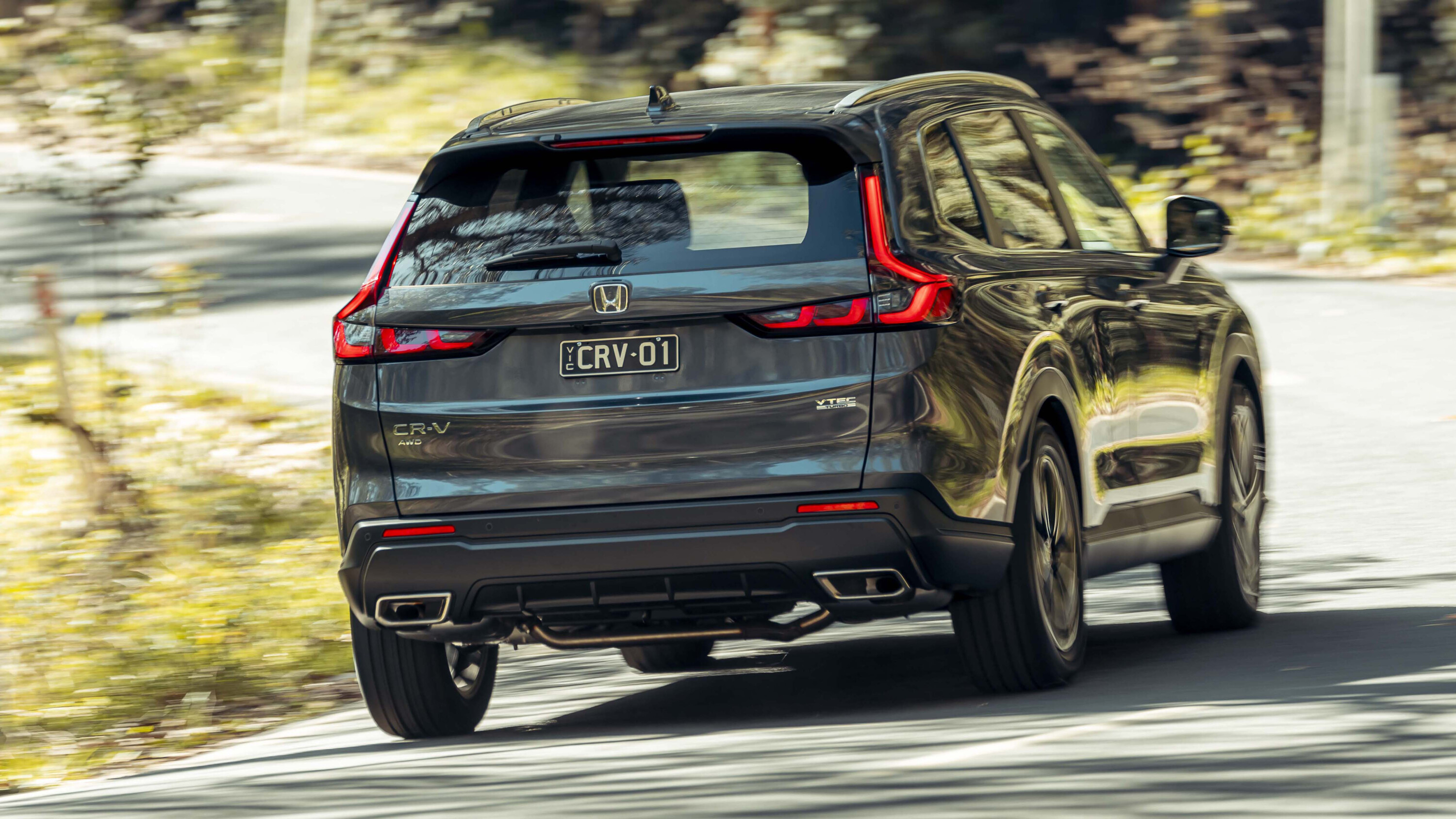
But it’s a powertrain that lacks torque, especially low in the rev range, and there’s none of the muscularity you’d expect from a turbo donk once boost builds.
Honda says that’s quite deliberate – it has shaped the torque curve to make the engine feel naturally aspirated – yet the result is a powertrain that needs to be worked hard to extract its best.
Still, there’s no escaping the CR-V is a fantastic family SUV to drive. It steers sharply, corners tenaciously, and it actually feels like a taller, slightly heavier Civic, which is a high praise indeed. In fact, more than one of us wondered whether Honda should consider building a Type R version of this CR-V!
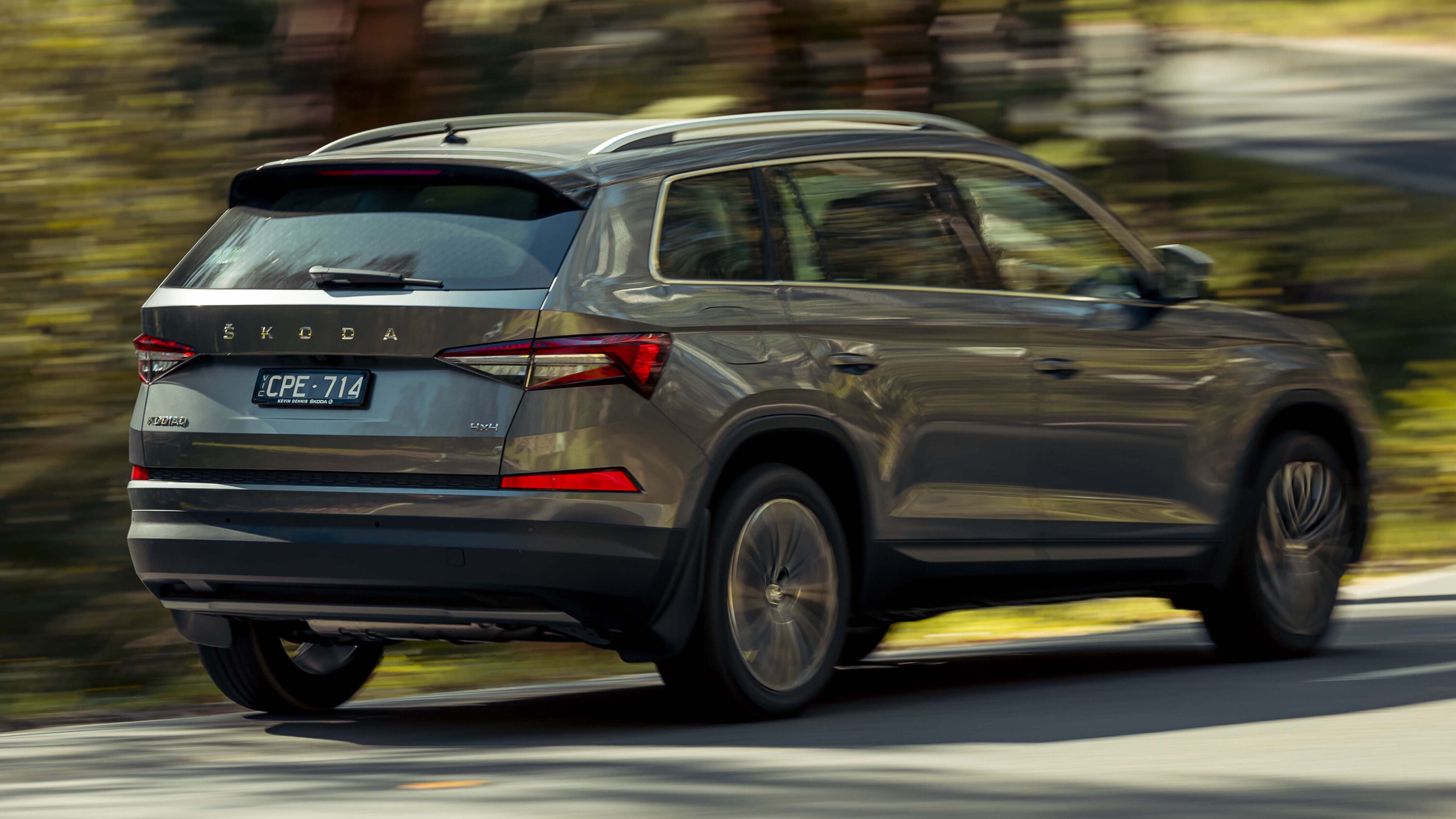
Things are slightly less sporty, yet no less cohesive, in the Skoda. Like the Honda, the Kodiaq’s damping and chassis set-up is superb, even on gnarly backroads, but unlike the Honda, the Skoda has the engine to properly exploit its dynamic goodness.
VW’s EA888 is a clean-revving unit and it feels far more urgent and powerful than the slightly strangled 1.5T you get in the CR-V. The Kodiaq is quicker out of corners, has a better soundtrack, and delivers stronger overtaking performance.
The Kodiaq’s lighter steering isn’t quite as engaging, however, and while its seven-speed dual-clutch is quick and decisive on the move, it can be frustratingly laggy around town.
Things are even more relaxed in the Toyota. After the greyhound eagerness of the Skoda and Honda, the big Toyota feels phenomenally soft and ponderous. Like a Labrador that’s had too much to eat.
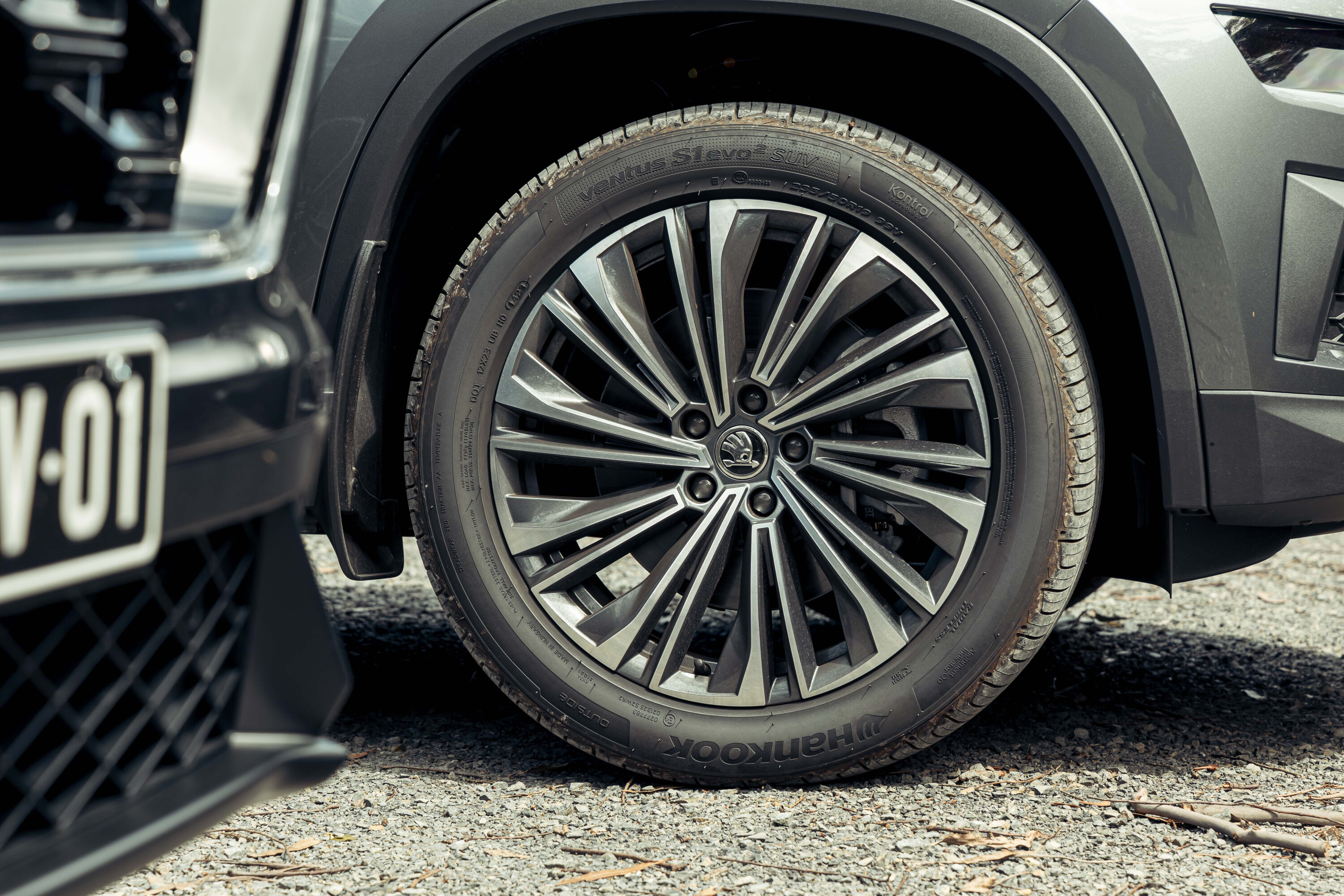
That’s not a criticism, per se, more an acknowledgment that comfort is the top priority here.
The long-travel suspension is supple and languid, the damping is relaxed (perhaps too relaxed; things can get a touch boaty), and the steering is light and effortless. For such a big car it’s surprisingly easy to manoeuvre, yet a word of warning: be judicious with your throttle inputs when it’s raining.
Toyota’s 2.4T is a gutsy engine and but it’s also prone to torque steer and will easily spin up the front wheels. It churns through petrol at a fearsome rate, too. On our dynamic loop, the Kluger returned a fuel reading of 21L/100km, which was miles ahead of the others over the same stretch of tarmac.

As you’d expect, the diesel Santa Fe drank the least (the Kodiaq was the next best, with the CR-V a close third) but the turbo oiler offers more than just efficiency.
It’s huge reserves of low-down torque make the Santa Fe a muscular and effortless cruise. Engine refinement is also a strength, with the smooth 2.2L unit mostly free of gruff diesel clatter. If only the rest of the Santa Fe’s dynamics were as convincing…
Despite riding on 18-inch alloys with chunky tyres, the Hyundai is the firmest SUV here and bumps are translated keenly into the cabin. Our tester’s brake pedal also felt disconcertingly dead, and vision out is also the worst of this lot.
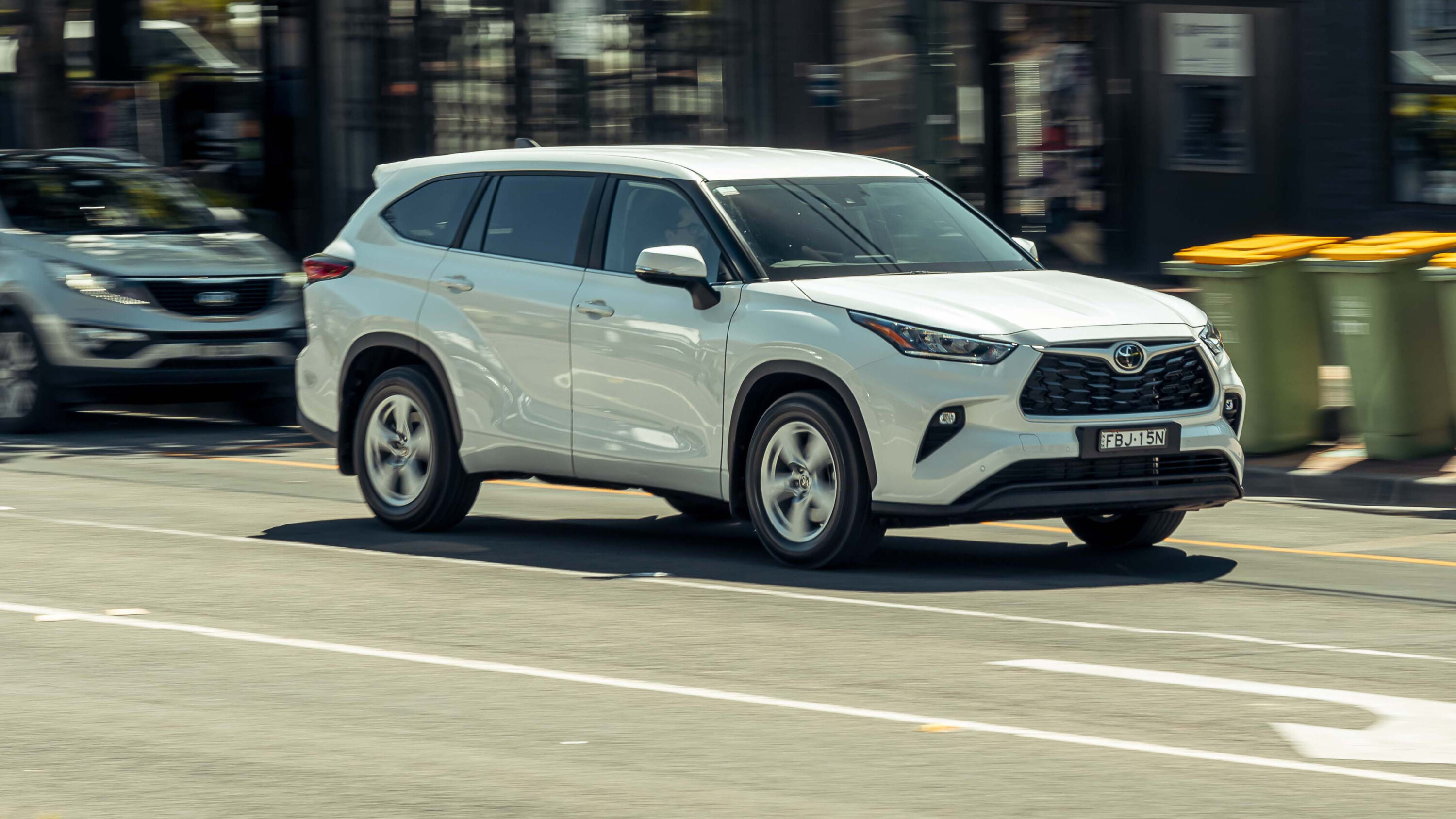
VERDICT
Before we establish an order for our quarter of contenders here, we should point out that we couldn’t get a Kia Sorento Sport+ for this test – with test-car availability limited by an upcoming model update.
While it’s difficult to say where the Sorento may have landed in our pecking order, we are big fans of the big Kia – not least for its third row that caters brilliantly for kiddies with not only top tethers but also Isofix points. More manufacturers should be offering this set-up!
The Kluger, Kodiaq and Santa Fe all lack top-tether points for their third rows, and the same applies to seven-seater versions of the CR-V.
Cabin refinement weaknesses and a driving experience that generally feels less polished compared with its rivals contributes to the Santa Fe’s last place in this test.
Coming home in third is the Kluger, with its spacious cabin (including third row) and soft ride quality making it an easy SUV to recommend.
The Toyota is also commendably cheap to service at $265 a pop, but in this company the Kluger lacks the dynamic finesse and cabin flair of the Honda and Skoda.
Splitting the Kodiaq and CR-V is harder. Both are dynamically excellent, offer modern, well appointed cabins, and should deliver similar readings at the fuel bowser. The Honda is cheaper to service at $199 per visit, yet its 10,000km service intervals are also shorter than the Kodiaq’s 15,000km.

Ultimately, we’d happily recommend both SUVs, but our winner is the Skoda.
Its engine is superior, it has a longer warranty (seven years plays five), and it also offers the flexibility of seven seats which is something the CR-V doesn’t have in the top-spec VTi LX.
And then there are the Skoda’s numerous practicality bonus touches, which will continue to surprise and delight buyers long after they’ve taken delivery. So while the Honda might be younger, the outgoing Kodiaq (which still has another year at least) shows that sometimes age and experience wins out.
2023 Best Large SUV series
Looking to get into a brand-new large SUV? Our stories below will guide you to the model that best suits your needs!
We recommend
-
 News
News2024 Skoda Kodiaq pricing and features
Ahead of its 2024 replacement, the current seven-seat Kodiaq gets more safety gear
-
 Reviews
Reviews2024 Honda CR-V review: Australian first drive
Could the all-new CR-V be the answer to Honda's prayers as it works to regain market share?
-
 News
News2024 Toyota Kluger pricing and features: sizeable price rises, no new equipment
Pricing adjustment for 2024 means popular large SUV is now more expensive than ever



